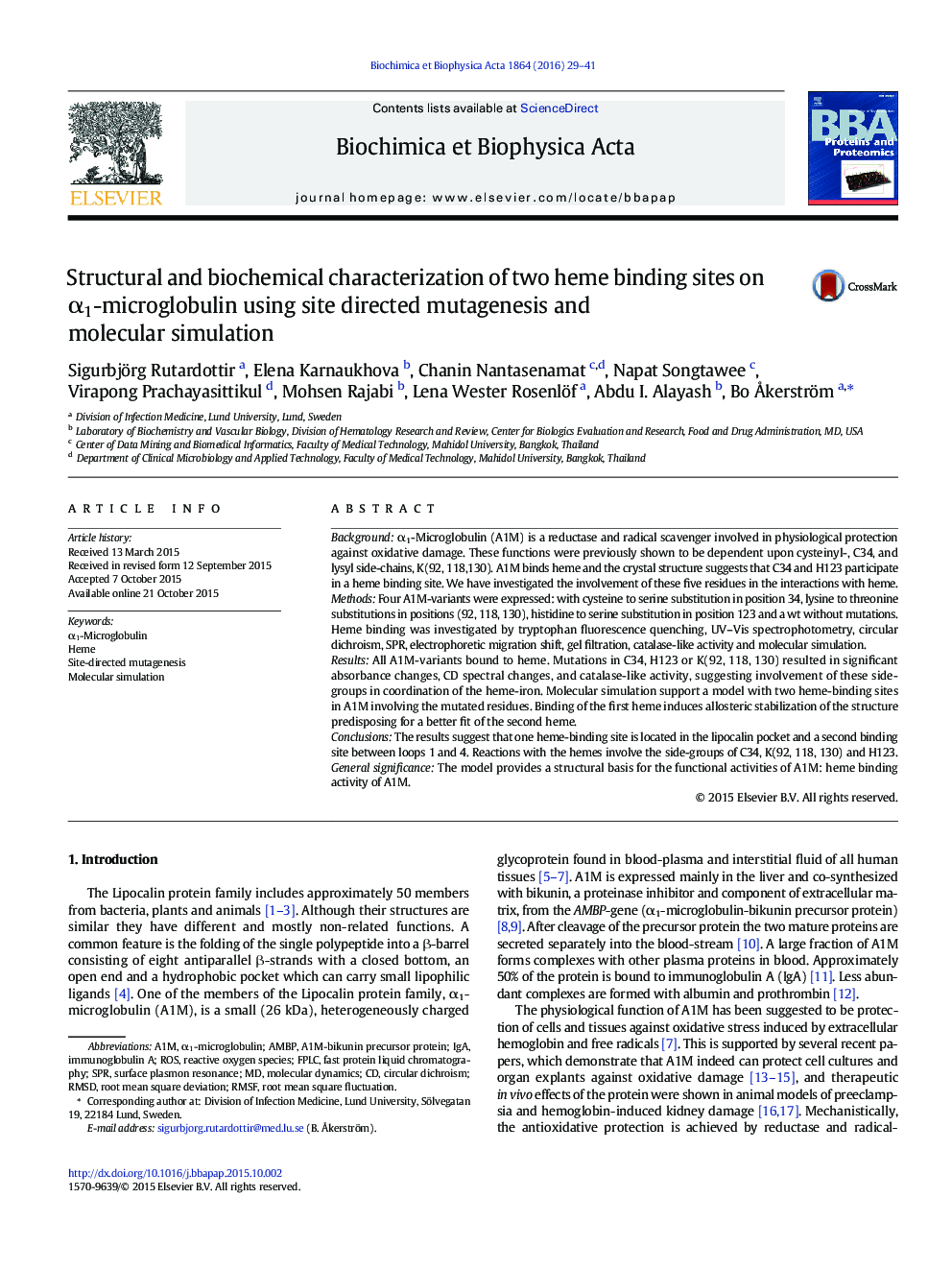| Article ID | Journal | Published Year | Pages | File Type |
|---|---|---|---|---|
| 1178221 | Biochimica et Biophysica Acta (BBA) - Proteins and Proteomics | 2016 | 13 Pages |
•Two heme groups can be bound simultaneously at separate sites in the human antioxidant α1-microglobulin.•The side-chains of K(92, 118, 130) participate in coordination of the first heme-group. C34 and H123 coordinate the second.•One binding site is located in the lipocalin pocket and a second, partly exposed binding site between loops 1 and 4.•The side-chains of C34, H123, K92, K118 and K130 regulate a reduction reaction with the heme-chelated iron atom.
Backgroundα1-Microglobulin (A1M) is a reductase and radical scavenger involved in physiological protection against oxidative damage. These functions were previously shown to be dependent upon cysteinyl-, C34, and lysyl side-chains, K(92, 118,130). A1M binds heme and the crystal structure suggests that C34 and H123 participate in a heme binding site. We have investigated the involvement of these five residues in the interactions with heme.MethodsFour A1M-variants were expressed: with cysteine to serine substitution in position 34, lysine to threonine substitutions in positions (92, 118, 130), histidine to serine substitution in position 123 and a wt without mutations. Heme binding was investigated by tryptophan fluorescence quenching, UV–Vis spectrophotometry, circular dichroism, SPR, electrophoretic migration shift, gel filtration, catalase-like activity and molecular simulation.ResultsAll A1M-variants bound to heme. Mutations in C34, H123 or K(92, 118, 130) resulted in significant absorbance changes, CD spectral changes, and catalase-like activity, suggesting involvement of these side-groups in coordination of the heme-iron. Molecular simulation support a model with two heme-binding sites in A1M involving the mutated residues. Binding of the first heme induces allosteric stabilization of the structure predisposing for a better fit of the second heme.ConclusionsThe results suggest that one heme-binding site is located in the lipocalin pocket and a second binding site between loops 1 and 4. Reactions with the hemes involve the side-groups of C34, K(92, 118, 130) and H123.General significanceThe model provides a structural basis for the functional activities of A1M: heme binding activity of A1M.
